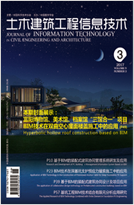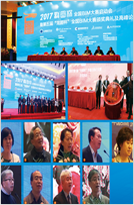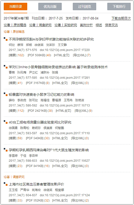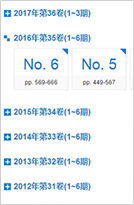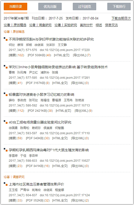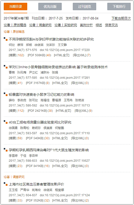2009, 1(1): 13-23.
中国建筑企业国际市场进入模式决策体系研究
香港理工大学 |
A Decision—making System for Selecting the International Market Entry Mode for Chinese Construction Enterprises
The Hong Kong Polytechnic University, Hongkong, China |
引用本文:
李恒, 金志刚. 中国建筑企业国际市场进入模式决策体系研究[J]. 土木建筑工程信息技术,
2009, 1(1): 13-23.

Citation:
Li Heng, Jin Zhigang. A Decision—making System for Selecting the International Market Entry Mode for Chinese Construction Enterprises[J]. Journal of Information Technologyin Civil Engineering and Architecture,
2009, 1(1): 13-23.

摘要:全球经济一体化的深入发展和国际建筑市场的巨大前景, 吸引了众多中国建筑企业参与到海外经营的行列中。面对海外复杂而多变的市场环境, 采用什么样的进入模式既可扩展海外市场又能降低经营风险以确保经营收益, 是长期困扰中国建筑企业的一大难题。本文通过国际市场进入模式相关理论的系统梳理, 发现其有较多局限性。如对进入国家的研究局限于由发达国家进入其它国家、对行业的研究局限于制造业和服务业以及在进入模式的选择中仅考虑静态的因素等。在此基础上, 本文综合考虑中国建筑企业及产业的发展特点, 重新构建了一套适用于中国建筑企业国际市场进入模式的分析框架及其相应的决策方法体系。
Abstract: Increases in the global economic integration and development prospects of the construction market have been encouraging more and more Chinese enterprises to participate in operations overseas.However, the overseas market environment is complex, volatile and therefore risky.While it is possible to achieve rapid expansion in overseas markets, the operational risks involved Call make this unsustainable in the long term.As a result, many Chinese construction enterprises are uncertain of the kind of entry mode to Use.The theory of international market entry mode offers some help and provides insights into possible approaches and solutions.However, there are many limitations and deficiencies with the existing theory.For example, the emphasis is on entry from developed to undeveloped countries; it is confined solely to the manufacturing and service industries; and the choice of entry modes does not fully allow for the dynamics of market change. To overcome these limitations, a decision-making system and corresponding analytical framework is developed to accommodate the specific characteristics of the construction industry.
| [1] |
Agarwal, S.and Ram swami, S.(1992).Choice of Foreign Market Entry Model:Impact of Ownership, Location and Internalization factors.Journal of International business Studies, 23(1):1-19.doi: 10.1057/palgrave.jibs.8490257 |
| [2] |
Agarwal, Sanjeev. 1994, "Socio-Cultural Distance and the Choice of Joint Ventures: A Contingency Prospective. Journal of International Marketing", 2(2): 63-80 |
| [3] |
Anderson, Erin and Hubert Gatignon. 1986, "Modes of Foreign Entry: A Transaction cost Analysis and Propositions. Journal of International Business Studies", 17: 1-26 |
| [4] |
Brouthers K. D. and Brouthers L. E., (2000). "Acquisition or Greenfield Start-Up, Institutional, Cultural and Transaction Cost Influences" Strategic Management Journal 21, 89-97. |
| [5] |
Brouthers, K., Brouthers, L and Harris, P.(1997).The five stages of co2operat vie venture strategy process.Journal of General Management, 23:39-52 |
| [6] |
Brouthers, Keith D. 2002, "Institutional Culture and Transaction Cost Influences on Entry Mode Choice and Performance. Journal of International Business Studies", 33(2): 203 |
| [7] |
Brouthers, L., Brouthers, K.and Werner, s.(2000), Perceived environmental uncertainty, entry mode choice and satisfaction with economic performance.British Journal of management, 11(3):1832195 |
| [8] |
Burgel, O.and Murray, G.(2000)The international market entry choices of startup companies in high technology industries.Journal of International Marketing, 8(2): 33-62. |
| [9] |
Chen Hai Yang and Michael Y Hu.2002, "An Analysis of Determinants of Entry Mode and its Impact on Performance".International Business Review.11, 193-210doi: 10.1016/S0969-5931(01)00055-5 |
| [10] |
Chung, Henry.F.L.and Peter Ender wick.2002, "An Investigation of Market Entry Strategy Selection:Export VS.Foreign Direct Investment Modes:A home-host Country Scenario".Asia Pacific Journal of Management, 18(4):443-460 |
| [11] |
Cristina, L.D.and G.C.Esteban.2002."The Effect of Firm and Host Country Characteristics 0n the Choice of Entry Mode:Empirical Evidence from Spanish Finns". Journal of Management and Governance, 6:153-168doi: 10.1023/A:1015708419745 |
| [12] |
D.K.Tse.2000."The Hierarchical Model of Market Entry Modes".Journal of International Business Studies.31 (4):535-554doi: 10.1057/palgrave.jibs.8490921 |
| [13] |
Daily CM.Ceao ST.and Dalton DR.(2000)"International Experience in the Executive Suite:the Path to Prosperity?"Strategic Management Journal, 21, 515-523.doi: 10.1002/(ISSN)1097-0266 |
| [14] |
Dunning, John H.2000."The Eclectic Paradigm as an Envelope for Economic and Business Theories of MNE Activity".International Business Refiew, 9:163doi: 10.1016/S0969-5931(99)00035-9 |
| [15] |
Either Theo and Jong Woo Kang."Trade.Foreign Direct Investment or Acquisition:Optireal Entry Modes for Multi nationals".University of Washington, 2002. |
| [16] |
Erramilli MK.(1991), "The Experience Factor in Foreign Market Entry Behavior of Service Firms, "Journal of International Business Studies 3, 479-499. |
| [17] |
Erramilli MK., Srivastava R.and Kim SS., (1999)"Internationalization theory and Korean Muhinationals" Asia Pacific Journal of Management Vol.16, 2945. |
| [18] |
Erramilli, M(1990).Entry Mode Choice in Service In dustries.International Marketing Review, 7(5):50-62. |
| [19] |
Erramilli, M and Rae, C (1993).Service firms' international entry mode choice:A modified transaction coat approach.Journal of Marketing.57(3):19-43.doi: 10.2307/1251852 |
| [20] |
Errmnilli, M and Rao, c(1990).Choice of Foreign market Entry Modes by Service Firms.Management International Review, 30(2):135—150. |
| [21] |
Gatignon, Hubert and Erin Anderson. The Multinational Corporations' Degree of Control over Foreign Subsidiaries: An Empirical Test of a Transaction Coat Explanation. Joumal of |
| [22] |
Gupta V, Hanges PJ and Dorfman P, (2002)"Cultural Clusters:Methodology and Findings."Journal of World Business 37, 11-15.doi: 10.1016/S1090-9516(01)00070-0 |
| [23] |
Hajidimitriou, Y. A., A. C. Georgiou and D. E. Porgianos. The Selection of Foreign Market Entry Staregies for European Firms, 2003 |
| [24] |
Hill Charles W.L., Peter Hwang and Kim Wickham.An Eclectic Theory of the Choice of International Entry Mode.Strategic Management Journal, 1990, 11:171-128doi: 10.1002/(ISSN)1097-0266 |
| [25] |
Holm lund, M.and Kock, S.(1998).Relationships and the internationalization of Finnish small and medium sized companies.International Small business Journal, 16 (4):46-63.doi: 10.1177/0266242698164003 |
| [26] |
Johnson, J.and W iedersheim2Paul, f.(1975).The internationalization of the firm four Swedish cases.Journal of Management Studies, 12 (3):11-24. |
| [27] |
Kim, W.A nod Hwang, P.(1992).Global strategy and Multinationals' entry mode choice.Journal of International Business Studies, First Quarter:29-54 |
| [28] |
Klein, Saul, Gary L.Frazier and Victor J.Roth.A Transaction Cost Analysis Model of Channel Integration in International Markets.Journal of Marketing Research, 1990, 27: |
| [29] |
Kogut, B.And Zander, U.(1993).Knowledge of the firm and the evolutionary theory of the multinational corporation.Journal of International business Studies, Fourth Quarter:625-645. |
| [30] |
Kogut, Bruce and Harbir Singh.The Effect of National Culture on the Choice of Entry Mode.Journal of International Business Studies, 1988, 19:411-432doi: 10.1057/palgrave.jibs.8490394 |
| [31] |
Kulkarni, S.(2001).The influence of the type of uncertainty on the mode of international entry.American business Review, 19 (1):94-101. |
| [32] |
Leung, M.K., D.Rigby and T.Young.Entry of Foreign Banks in the People's Republic of China:A Survival Analysis.Applied Economics, 2003, 35:21-31doi: 10.1080/00036840210148030 |
| [33] |
Luo YD., (1999), "Time-Based Experience and International Expansion:The Case of an Emerging Economy" Journal of Management Studies 36 (4), 505-534.doi: 10.1111/1467-6486.00147 |
| [34] |
Madhok, Anoop.The Nature of Multinational Firm Boundaries:Transaction Costs, Firm Capabilities and Foreign Market Entry Mode.International Business Review, 1998, 7, 259-290doi: 10.1016/S0969-5931(98)00009-2 |
| [35] |
Madhok, A.(1997).Cost, value and foreign market entry mode:the transaction and the firm.Journal of International Business Studies, 18:39-61. |
| [36] |
Mattoo, A., M. Olarreaga and K. Saggi. Mode of Foreign Entry, Technology Transfer, and FDI Policy. CEPR Discussion Paper No. 2870. London: Centre for Economic Policy |
| [37] |
Meyer Klaus E.Institutions, Transaction Costs, and Entry Mode Choice in Eastern Europe.Working Paper No.34, CEES, 2000. |
| [38] |
Mutinelli M.and Piscitello L, (1998), "The Influence of firm's Size and International Experience on the Ownership Structure of Italian FDI in Manufacturing", Small Business Economics, 11, 43-56.doi: 10.1023/A:1007926404199 |
| [39] |
Nakos, George and Keith D.Brouthers.Entry Mode Choice of SMEs in Central and Eastern Europe.Entrepreneurship Theory and Practice, 2002, 27 (1):47-64doi: 10.1111/1540-8520.271003 |
| [40] |
Nitsch, D., Beamish, P.and Makino, S.(1996).Entrymode and performance of Japanese FDI in Western Europe.Management International Review; Wiesbaden, 36:27-50. |
| [41] |
O'Grady S.and Lane HW, (1996)"The Psychic Distance Paradox", Journal of International Business Studies 27 (2), 309-333. |
| [42] |
Pan Yigang and Tse DK., (2000)"The Hierarchical Model of Market Entry Modes" Journal of Internationalization Business Studies, 31 (4), 535-554.doi: 10.1057/palgrave.jibs.8490921 |
| [43] |
Root, F. (1994). Entry strategies for international markets. Lexington books. Shane, s. (1994). |
| [44] |
Sridhar N.Ramaswami.Choice of Foreign Market Entry Mode:Impact of Ownership, Location and Internalization Factors.Journal of International Business Studies, 2000, 23 |
| [45] |
Sun, H.and Tipton, F.(1998).A comparative analysis of the characteristics of direct foreign investment in China, 1979-1995.The Journal of Developing Areas, 3292):159-186. |
| [46] |
The effect of national culture on the choice between licensing and direct foreign investment. Strategic management Journal, 15 (8): 627-642. Quarter: 253-273. |
| [47] |
Woodcock, C., Beamish, P.and Makino, S.(1994).Ownership based entry mode strategies and international performance.Journal of International business Studies, Second Quarter:253-273. |
计量
- PDF下载量(6)
- 文章访问量(1055)
- HTML全文浏览量(746)



